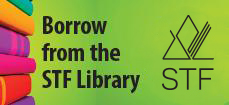Course Configurations
| (a) | Determine the investor profile for oneself or for an individual in a given scenario using an investor profile assessment. |
| (b) | Assess the risk tolerance for oneself or for an individual in a given scenario. |
| (c) | Describe investment goals for oneself or for an individual in a given scenario. |
| (d) | Compare the features of various investment types (e.g., stocks, bonds and mutual funds). |
| (e) | Discuss the reasons for diversifying an investment portfolio to support short-, medium- and long-term goals. |
| (f) | Explain the relationship between risk/return and diversification of investments. |
| (g) | Research and compare features of different types of investment strategies and styles such as the Couch Potato, market timing, dollar-cost averaging, leverage investing, short selling, index investing, Value/Growth and Dividend Reinvestment Plan (DRIP). |
| (h) | Discuss the advantages and disadvantages of developing and managing one’s own investment portfolio compared to working with a financial advisor. |
| (i) | Identify and evaluate services that assist individuals with investing. |
| (j) | Analyze the risk and relationship between inflation and rate of return. |
| (k) | Research the concept of “buying low and selling high.” |
| (l) | Assess the financial implications (e.g., capital gains) of acquiring and disposing of capital assets. |





This Canadian resource supports the Financial Literacy curriculum and provides information at a suitable introductory level. The resource is organized under six headings for a total of 15 modules.
Topics covered:
- Goals, Values and Decision-making
- Getting and Earning Money
- Spending Money and Taking Control
- Borrowing Money and Using Credit
- Saving and Investing Money
- Protecting Assets and Planning for the Future.
The resource includes:
- Student Guide, English or French, free online PDF version or hard copies can be ordered at a minimal fee
- Teacher's Guide, English or French, free online version
This Canadian textbook is divided into five parts:
- Planning Your Personal Finances
- Managing Your Personal Finances
- Insuring Your Assets
- Investing Your Financial Resources
- Controlling Your Financial Future
The resource contains case studies, concept checks, assignments and assessment examples.
There are four purchase options:
- eBook
- eBook only (online version of textbook)
- Connect
- eBook, homework, adaptive assignments and study tools
- Connect and print text
- eBook, homework, adaptive assignments and study tools
- printed textbook
- Print text
- printed textbook only

The Indigenous Edition of Money and Youth builds on the original resource from the Canadian Foundation for Economic Education, CFEE. Damon Johnston, President of the Aboriginal Council of Winnipeg, provided guidance rooted in traditional teachings and the Seven Sacred Laws. Vanessa Everett, CEO of Economic Development with the Keewatin Tribal Council, adapted the original version by Gary Rabbior of CFEE. Input from respected individuals across Turtle Island also helped shape this edition.
Topics covered:
- Goals, Values and Decision-making
- Getting and Earning Money
- Spending Money and Taking Control
- Borrowing Money and Using Credit
- Saving and Investing Money
- Protecting Assets and Planning for the Future.
The resource includes:
- Student Guide, English, free online PDF version or hard copies can be ordered at a minimal fee
- Teacher's Guide, English, free online version

